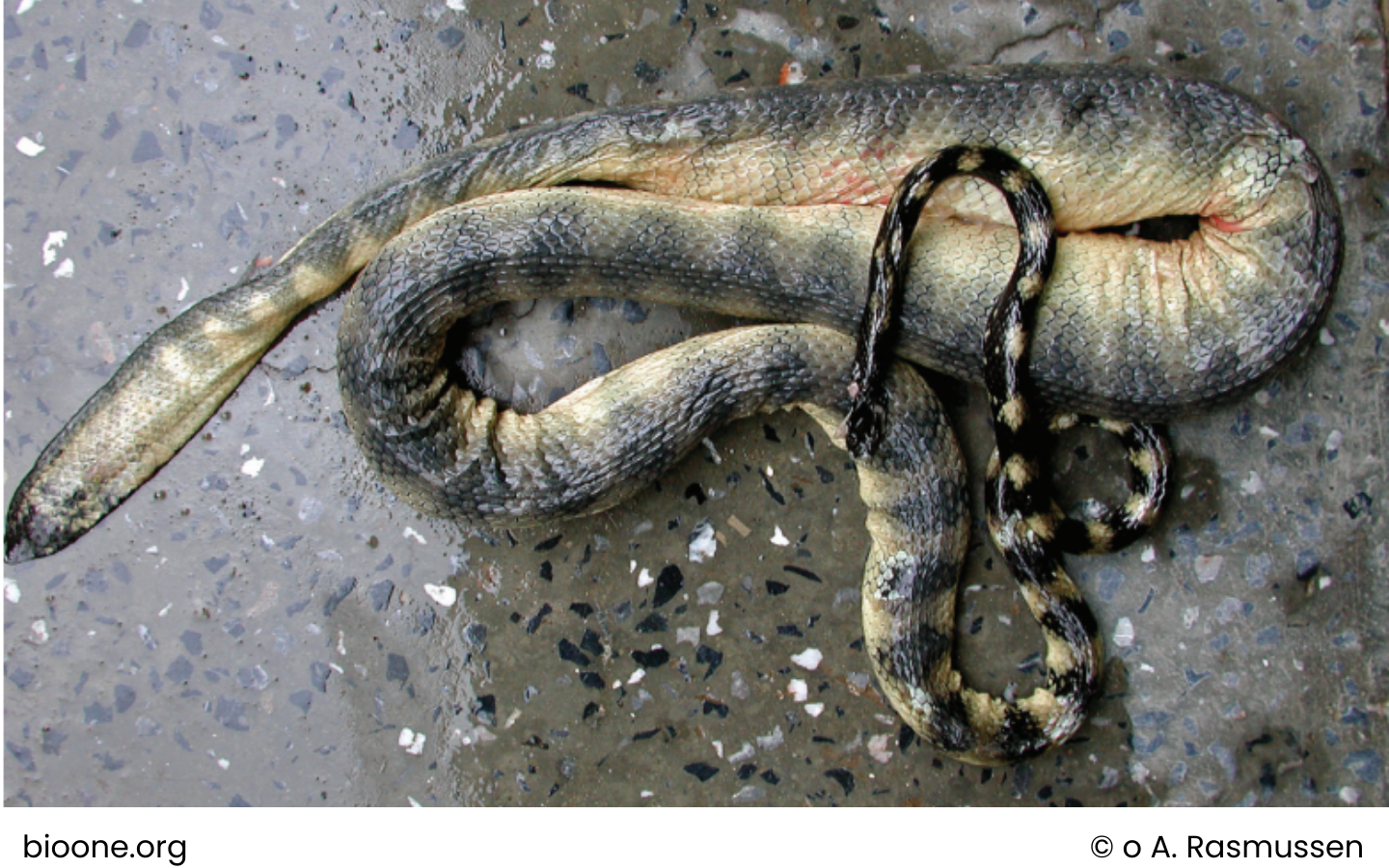
Science name: Hydrophis parviceps – Smith, 1935
Taxonomic: Animalia>> Chordata>> Reptilia>> Squamata >> Elapidae >> parviceps
Species status: Endemic ; IUCN status: LC (Least Concern)
Description:
Physical characteristics: Hydrophis parviceps has a small head and a slender, elongate body that becomes more compressed towards the posterior. It has 19–21 scale rows around the neck and 31–34 around the body. The ventrals range from 329 to 348. Maxillary teeth number six behind the fangs.
Coloration and Appearance: The body is olivaceous (olive-greenish) on the upper side and greyish below. The species has between 65 to 70 blackish bands running across the body. The head is predominantly black, with no or very few faint paler markings.
Distribution and habitat:
Elevation: This is a marine species, with no specific elevation range applicable as it lives in subtidal regions.
Area: Hydrophis parviceps is known from the South China Sea, specifically along the coast of Cochin-China in southern Vietnam. Its area of occupancy is estimated to be less than 2,000 km².
Habitat: This species inhabits marine neritic environments, particularly subtidal sandy-mud regions. Information about its specific habitat preferences is limited, but it is believed to feed primarily on eels.
Behaviour and ecology:
Lifestyle: Little is known about the behavior of this species. It is ovoviviparous, meaning it gives birth to live young, and it feeds primarily on eels. The species is venomous, typical of the family Elapidae.
Reproduction: This species is ovoviviparous, though further details on its reproductive behavior are not well documented.
Conservation and status:
IUCN Red List Category and Criteria: Listed as Data Deficient (DD), as there is limited information on the population, distribution, and potential threats to this species. It is only known from a single location and five specimens.
Threats: Specific threats to Hydrophis parviceps have not been identified, though its restricted range could make it vulnerable to habitat degradation or other environmental changes.
Conservation actions: More research is needed to determine the species’ population trends, distribution, and any potential threats to its survival.
Crocodile Trail – The Best Birding Trail in Cat Tien National Park
If you’re a birder or nature photographer planning a trip to Vietnam, few places offer [...]
Cong Troi Trail – Top 1 Dalat Plateau Birding Trail Experience
If you’re a birder or nature photographer planning a trip to Vietnam’s Central Highlands, the [...]
How to Identify the Greater Sand Plover, Tibetan Sand Plover and Siberian Sand Plover
Identification Differences within the Sand Plover Complex: The sand plover group, which was traditionally divided [...]
Highlights of Cat Tien National Park Reptiles and Amphibian Endemics
Spanning over 71,350 hectares of tropical forests, grasslands, and wetlands, Cat Tien National Park is [...]
Highlights of Cat Tien National Park Mammals in a World Biosphere Reserve
In addition to reptiles and birds, Cat Tien National Park is also rich in mammals, [...]
Kontum Plateau Endemic and Highlight bird
Kontum Plateau Endemic And Highlight Bird species like Chestnut-eared Laughingthrush and top birding routes while [...]